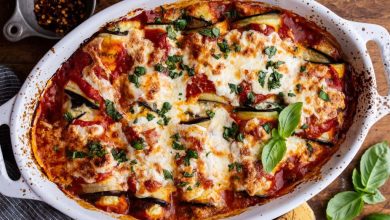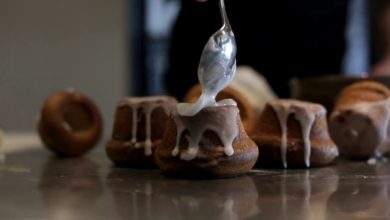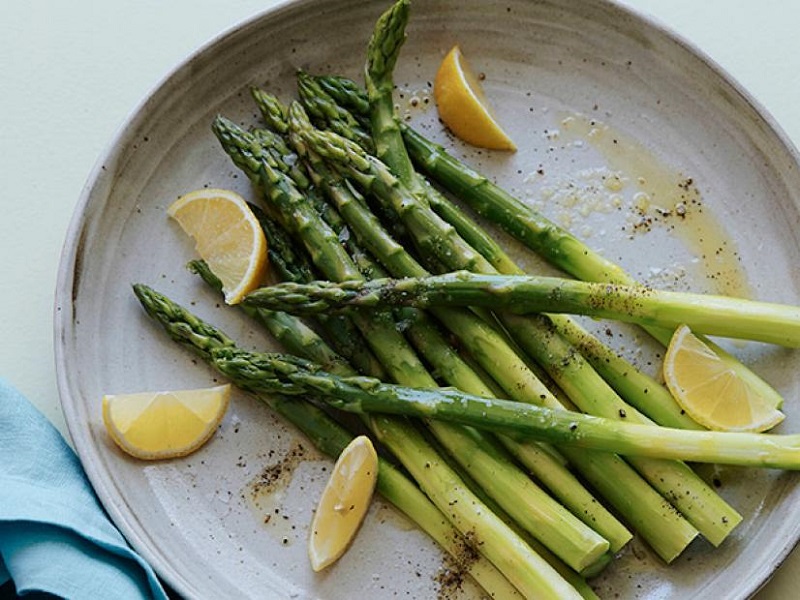How Long to Cook Pork Loin Roast? Perfectly Succulent Results

A pork loin roast should be cooked for approximately 20-25 minutes per pound. This delicious and versatile cut of meat can be the centerpiece of a flavorful meal.
Whether you’re planning a Sunday dinner or a special occasion feast, knowing how long to cook a pork loin roast is essential to achieve the perfect juicy and tender result. Cooking time for a pork loin roast can vary depending on the size of the roast, but as a general rule, it should be cooked for about 20-25 minutes per pound.
This will ensure the meat is cooked through but still moist and flavorful. By following these guidelines, you can create a mouthwatering pork loin roast that will impress your family and friends.
Choosing The Right Pork Loin Roast
When it comes to preparing a delicious pork loin roast, selecting the right cut of meat is crucial. The quality and characteristics of the pork loin roast you choose will directly impact the taste and tenderness of the final dish. In this section, we will explore two important factors to consider when choosing a pork loin roast: bone-in vs. boneless and fat content and marbling.
Bone-in Vs. Boneless
One decision you’ll need to make when selecting a pork loin roast is whether to go with a bone-in or boneless option. The choice ultimately comes down to personal preference and the specific cooking method you plan to use.
One decision you’ll need to make when selecting a pork loin roast is whether to go with a bone-in or boneless option. Sous vide pork loin roast is a great way to cook pork loin, and it can be done with either a bone-in or boneless roast. The choice ultimately comes down to personal preference and the specific cooking method you plan to use.
Bone-In Pork Loin Roast: If you prefer your meat to have a more robust flavor and enhanced tenderness, a bone-in pork loin roast is the way to go. The bone acts as a conductor of heat, helping to distribute it evenly throughout the meat. Additionally, cooking with the bone intact can add richness and depth to the overall flavor of the roast.
Boneless Pork Loin Roast: On the other hand, if you value the ease of carving and prefer a leaner cut, a boneless pork loin roast may be the better choice. Without the bone, it is easier to slice the roast into uniform portions, making it more convenient for serving. Furthermore, boneless pork loin roasts generally have less fat content, resulting in a leaner and potentially healthier dish.
Fat Content And Marbling
In addition to considering the bone-in or boneless option, it is important to pay attention to the fat content and marbling of your pork loin roast. The distribution of fat throughout the meat, known as marbling, plays a significant role in creating a tender and juicy roast.
Fat Content: While some fat is necessary to enhance flavor and moistness, choosing a pork loin roast with excessive fat may lead to a greasy final product. Opt for a cut of meat that has a moderate amount of fat, preferably evenly distributed throughout the roast. This will help to maintain moisture while still offering a delicious dining experience.
Marbling: The presence of marbling, which refers to fine streaks and specks of fat throughout the muscle, is a desirable quality in a pork loin roast. These thin threads of fat melt during cooking, infusing the meat with moisture and flavor. Look for a roast with marbling that appears even and consistent.
Preparation And Seasoning
Proper preparation and seasoning are essential for creating a delicious and succulent pork loin roast. By taking the time to trim and tie the roast, as well as choosing the perfect seasoning options, you can elevate the flavors to a whole new level.
Trimming And Tying
Before cooking your pork loin roast, it’s important to trim off any excess fat or silver skin. This not only enhances the presentation but also prevents the meat from becoming tough during the cooking process. To trim the roast, use a sharp knife to carefully remove any unwanted fat or connective tissue.
Once trimmed, tying the roast is a step that shouldn’t be overlooked. Tying helps to maintain the roast’s shape and ensures even cooking throughout. Using kitchen twine, tie the roast at regular intervals, creating an evenly shaped cylinder. This will prevent the roast from spreading out and cooking unevenly.
Seasoning Options
When it comes to seasoning your pork loin roast, the options are endless. Here are a few popular choices:
| Seasoning Option | Description |
| Traditional Herbs and Spices | A classic combination of rosemary, thyme, garlic, salt, and pepper adds a timeless flavor to the roast. |
| Citrus and Herb Infusion | Create a vibrant and refreshing taste by seasoning the roast with a mixture of citrus zest, lemon juice, and a medley of fresh herbs. |
| Sweet and Savory Rub | For a delectable contrast of flavors, try a rub made from brown sugar, paprika, cumin, and a hint of chili powder. |
Whichever seasoning option you choose, make sure to generously coat the entire surface of the roast. This will ensure that every bite bursts with flavor.
Cooking Methods For Pork Loin Roast
For a pork loin roast, cook at 350°F for 20 minutes per pound until the internal temperature reaches 145°F. Use a meat thermometer to check doneness. For extra flavor, consider searing before roasting and basting with juices during cooking. Adjusting cooking time is key for the perfect pork loin roast.
Oven Roasting
Moist and tender, oven roasting is one of the most popular methods for cooking pork loin roast. Preheat the oven to 350°F (175°C). Season the pork loin roast with your favorite herbs and spices. Place the seasoned roast in a roasting pan and cook for about 20 minutes per pound, until the internal temperature reaches 145°F (63°C). Rest the roast for a few minutes before slicing to retain its juices.
Grilling And Searing
Grilling and searing add a delicious smoky flavor to the pork loin roast. Prepare your grill for direct heat cooking. Sear the roast on all sides over high heat for about 2-3 minutes per side. Then move the roast to the cooler side of the grill and cook for an additional 20-25 minutes per pound, maintaining a grill temperature of around 350°F (175°C). Use a meat thermometer to ensure the internal temperature reaches 145°F (63°C) before removing the roast from the grill.
Internal Temperature And Testing Doneness
When it comes to cooking a tender and juicy pork loin roast, it’s crucial to know the right internal temperature and how to test its doneness. Using a meat thermometer and allowing for a resting period are key steps in ensuring your pork roast is cooked to perfection. Let’s dive into these important details:
Using A Meat Thermometer:
One of the best ways to determine the doneness of your pork loin roast is by using a meat thermometer. An instant-read thermometer is ideal for quick and accurate temperature readings. To do this:
- Insert the thermometer into the thickest part of the pork loin roast, avoiding any bones or fat.
- Wait for the temperature to stabilize. This may take a few seconds.
- Read the temperature displayed on the thermometer.
Remember to clean the thermometer between uses to prevent cross-contamination.
Resting Period:
After removing the pork loin roast from the oven, it’s essential to let it rest for a few minutes. Resting allows the juices to redistribute throughout the meat, resulting in a juicier and more flavorful roast. Follow these steps:
- Transfer the cooked pork loin roast to a clean cutting board or platter.
- Loosely cover the roast with foil to retain heat.
- Let it rest for about 10-15 minutes before slicing.
This resting period will also make it easier to carve the roast into uniform slices. Remember, the internal temperature of the roast will continue to rise a few degrees during the resting period, so take that into account when determining the final cooking time.
Serving And Pairing
Cooking a pork loin roast to perfection – learn how long to cook it for moist and tender results. Discover the ideal serving and pairing options for a delectable dining experience.
When it comes to serving and pairing your perfectly cooked pork loin roast, there are several factors to consider. From mastering the slicing techniques to selecting the ideal accompaniments and sauces, every detail can elevate your dining experience.
Slicing Techniques
To showcase the tenderness and juiciness of your pork loin roast, it’s important to employ proper slicing techniques. Follow these steps for a professional presentation:
- Begin by allowing the pork loin roast to rest for a few minutes before slicing. This will help retain the moisture and ensure a more succulent texture.
- Using a sharp knife, slice the pork loin roast against the grain. This will result in tender, bite-sized pieces that are easy to chew.
- For optimal results, aim for slices that are around ¼ to ½ inch thick. This thickness allows for even cooking and enhances the overall texture.
Remember, the way you slice your pork loin roast can make a significant difference in the overall eating experience. So take your time and slice with precision.
Accompaniments And Sauces
To complement the rich flavors of the pork loin roast, consider pairing it with delicious accompaniments and sauces. Here are a few options to tantalize your taste buds:
- Roasted vegetables: A medley of caramelized carrots, roasted potatoes, and seasoned Brussels sprouts can provide a delightful contrast to the savory pork loin roast.
- Apple sauce: The natural sweetness of apple sauce can balance out the richness of the pork, creating a harmonious flavor combination.
- Garlic mashed potatoes: Creamy and garlicky mashed potatoes act as the perfect side dish, adding a comforting element to your meal.
Additionally, you can enhance the flavors of your pork loin roast with some delectable sauces:
| Sauce | Description |
| Pepper sauce | A spicy and tangy sauce that adds a kick to your pork loin roast. |
| Mushroom gravy | A rich and earthy gravy that complements the pork loin roast beautifully. |
| Mustard sauce | A tangy sauce that adds a burst of flavor to your dish. |
By pairing your pork loin roast with carefully selected accompaniments and sauces, you can create a well-balanced and satisfying meal that will impress your guests. Now that you have mastered the art of serving and pairing your pork loin roast, it’s time to savor every delicious bite. Whether you choose to slice it perfectly or select the ideal accompaniments, remember that attention to detail can make all the difference in transforming a simple roast into a culinary masterpiece.
Frequently Asked Questions On How Long To Cook Pork Loin Roast
How Long Should I Cook A Pork Loin Roast?
A pork loin roast should be cooked for about 20 minutes per pound at 350°F. It is recommended to use a meat thermometer to ensure that the internal temperature reaches 145°F for medium-rare doneness or 160°F for medium doneness.
What Temperature Should I Cook A Pork Loin Roast To?
A pork loin roast should be cooked to an internal temperature of 145°F for medium-rare doneness or 160°F for medium doneness. This ensures that the meat is cooked through but still juicy and tender. Using a meat thermometer is recommended to accurately determine the temperature.
How Can I Keep My Pork Loin Roast From Drying Out?
To prevent your pork loin roast from drying out, you can baste it with pan drippings or a marinade during cooking. Another method is to sear the roast on high heat before transferring it to the oven to seal in the juices.
It is also important to cook the roast to the recommended internal temperature and let it rest for a few minutes before slicing.
Conclusion
Cooking the perfect pork loin roast may seem challenging at first, but with the right know-how, you can achieve a delicious result every time. Whether you prefer a traditional oven-roasted method or want to try your hand at slow cooking or grilling, “The Ultimate Guide to Cooking Perfect Pork Ribs in the Oven” is your go-to resource for achieving succulent, finger-licking results every time.the key is to pay attention to the internal temperature and let the meat rest before serving.With these tips, you can master the art of cooking pork loin roast to perfection and impress your family and friends. Happy cooking!






